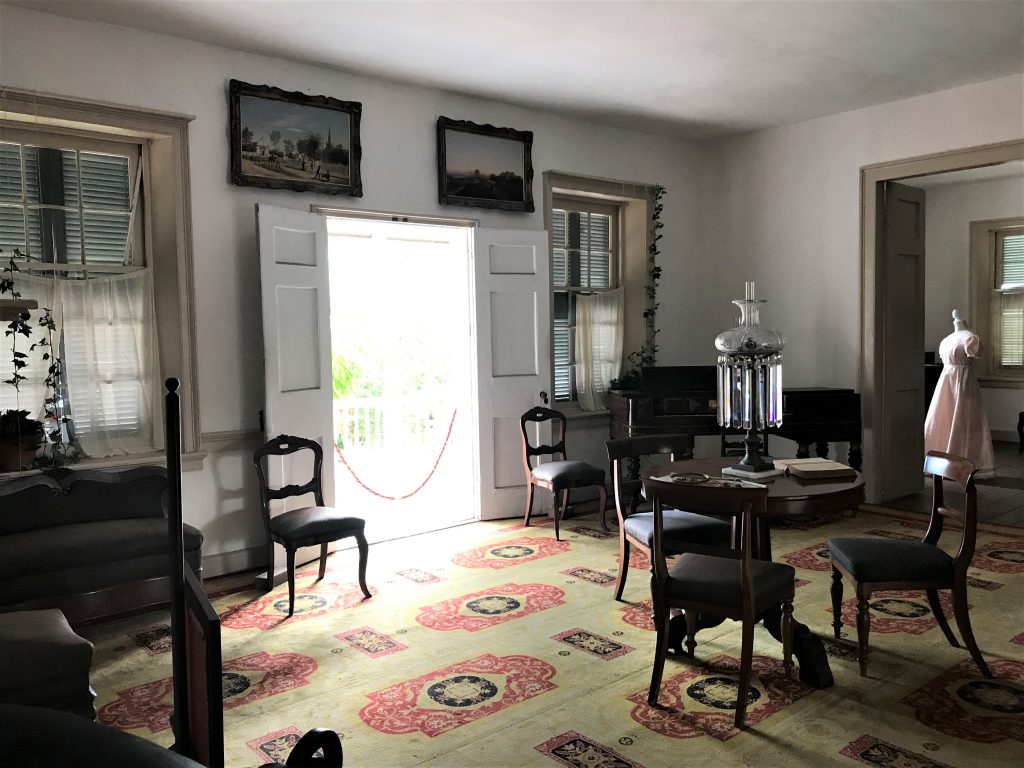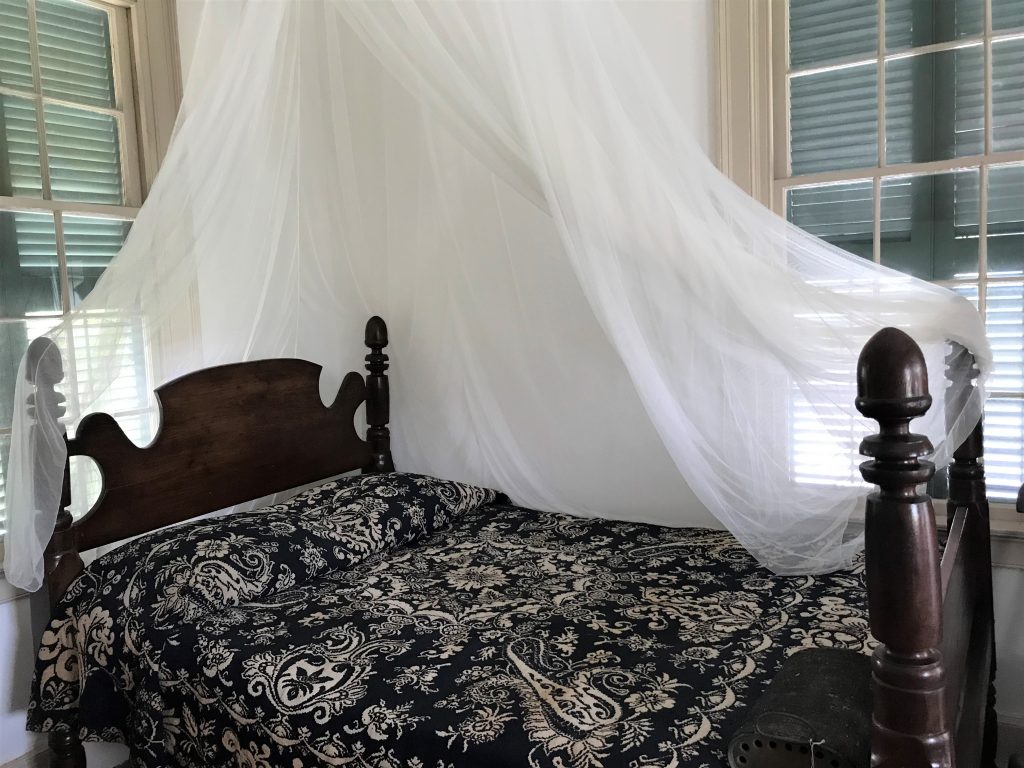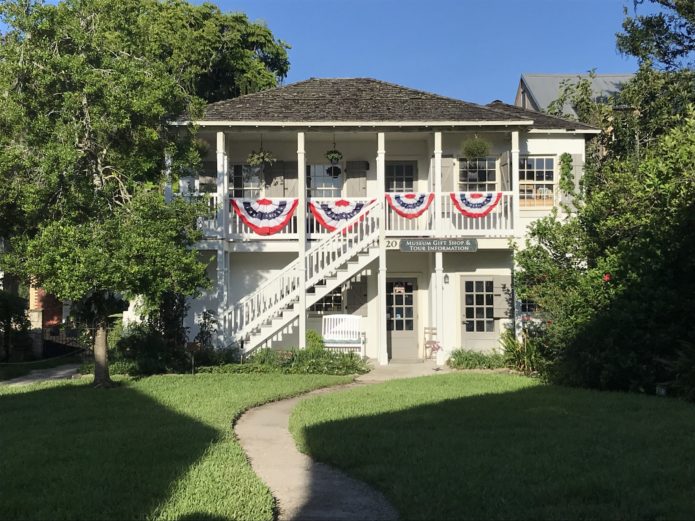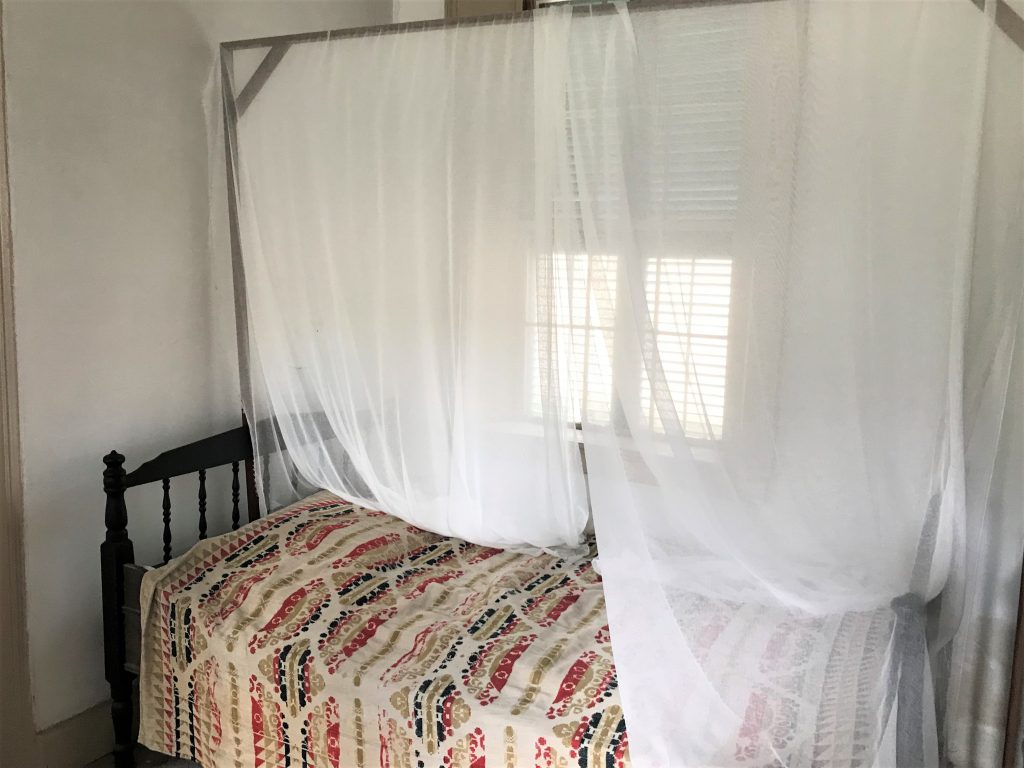Here’s a history question. What is the oldest city in the US?
It’s not Jamestown, Williamsburg or Plymouth as many people might guess. It’s St. Augustine, located in the northeast corner of Florida.
About a century before the Pilgrims set sail on the Mayflower, Spanish explorer Don Pedro Menendez de Aviles founded the city in 1565. Today, the city of 45.000 offers a multitude of places to tour.
Ximenez-Fatio House
With just one afternoon to sightsee, we could only pick one house or museum tour. Fortunately, we chose the Ximenez-Fatio House with its fascinating history. Our tour guide Shelby, a self-proclaimed Flagler College drop-out, writer and artist, guided us through the two-story, coquina house.

History
Originally built in 1798, Don Andres Ximenez operated three businesses – a grocery, bar and billiards hall on the first floor while he and his family lived upstairs. At the time, the house consisted of the front portion and the outdoor kitchen with a one-story warehouse connecting the two buildings.

Like many structures in St. Augustine, Ximenez constructed the house with coquina, which is basically crushed up seashells. Shelby passed out a sample for us to hold as she explained the material grew in popularity as it kept out the heat of the summer and could be found all along the coast. The Castillo de San Marcos Fort is built entirely with coquina and due to its porous nature, absorbed bullets from enemy fire. However, one of the problems with coquina is that houses must be replastered about every 10 – 15 years.
Around 1830, the Ximenez descendents sold the house to a wealthy widow from Charleston, Mrs. Margaret Cook. From this point on, the house served as a boarding house for almost 100 years.
I tend to think of boarding houses as seedy-places in urban areas attracting a sketchy clientele. This wasn’t the case in the 1800s. Hotels as we know them today didn’t exist back then. And because travel took so long, people would stay for weeks, months or even years at their destination.
In fact, boarding houses were one of the few things a reputable widow could own. Also, Mrs. Cook didn’t accept just anybody. Visitors had to provide a letter of recommendation and a background check in order to stay. When my daughter asked for more details, Shelby explained that a man might have business dealings with a merchant in St. Augustine. That merchant would write the letter of recommendation to Mrs. Cook stating the person’s character and intention for the trip.
Inside the House
Mrs. Cook repurposed the first-floor rooms. She converted the billiards hall to a dining room, which was known for its good food. I automatically assumed the two panels hanging from the ceiling and attached by ropes and pulleys fanned the guests to make them cooler. Instead, we learned the panels swatted mosquitos and bugs from the food.

The new owner also turned the warehouse into guest rooms, making the main house more of an “L” shape. Since the owner (or in this case, the manager named Mrs. Whitehurst) occupied the second floor, men traveling alone could only stay in these downstairs rooms. Many times, military officers would pay to stay two to a bed here instead of sleeping on the floor elsewhere.
Upstairs, Shelby told us that Dr. Seth Peck and his family lived in the house for 3 years purchasing their own home. The staff believes the Peck family stayed in the mistress’s suite while she occupied the adjacent, but smaller, sewing room.

Over time, the ownership changed to Mrs. Sarah Petty Anderson around 1838 and later to Miss Louisa Fatio in 1850. When Miss Fatio’s sister died, leaving five children, she added a second story to the original warehouse for more bedrooms. Besides taking in her orphaned relatives, she brought in another sister to help out.

As we entered a room with a bed, toddler beds and a crib, I found it fascinating that so many people could live together in one room – and they saw it as a luxury. Shelby thinks the room is haunted and pointed out the “creepy Confederate doll” at the foot of the bed. The doll’s head screws off and secret messages were hidden during the Civil War.
One time, a staff member moved the doll to another part of the room. On a tour, Shelby gave the doll’s history while backing into the room. Turning around, the doll wasn’t there and startled her. Then she turned back around to face the visitors and the doll sat at the foot of the bed causing her to scream.

Here’s another creepy thought. Shelby said that many older women lived at the boarding house to convalesce from diseases. If a family really didn’t think their relative would get well, they shipped her down there with a coffin. Due to space limitations, the coffin would often be stored under the person’s bed!
After walking through a few more bedrooms, all with netting over the bed to protect against mosquitoes, we came to the women’s balcony. A partition came down to divide this balcony from the breezeway connecting the other rooms on the second floor. During the day, the females could sit on the balcony with their hair down in complete privacy. So what’s the big deal about a woman relaxing on a balcony? Back then, a woman seen with her hair untied or loose meant she was a “loose woman.”
Outbuildings
Walking down the outside staircase, Shelby pointed to the garden where an archeologist found a Caravaca cross in 2002. The cross dates back to 17th century Spain and resides in a glass case in the museum’s gift shop.
We walked through the outbuildings containing a livery, kitchen and laundry room. Here, only wooden shutters protected the windows from the outside elements. Shelby said that glass wouldn’t have been used for these utilitarian parts of the house.

Our tour concluded back at the gift shop where we looked at the Caravaca cross. It was much smaller than I expected. I glanced at my watch and realized we’d been there for over an hour. Getting a personalized tour was the perfect way to understand the house, grounds and appreciate early Florida history.
In addition to conducting tours and hosting weddings, the Ximenez-Fatio House offers Heist at the Museum on Friday and Saturday evenings. Much like the game of Clue, participants try to guess who stole the Caravaca Cross.
For more information about the house, visit their website here.


